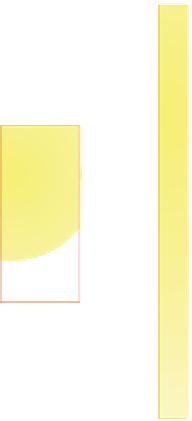Environmental Engineering Reference
In-Depth Information
Table 12.1
Biomass potential in Germany
(Kaltschmitt
et al.
, 2003)
.
Useable quantity
in millions of tons
Energy potential
in PJ/a
Stalk-type (straw, grass)
10-11
140-150
Wood and wood residue
38-40
590-622
Biogas substrate (biomass waste and residue)
20-22
148-180
Purifi cation and landfi ll gas
2
22-24
Energy plant mix
22
298
Total biomass potential
92-97
1198-1274
sugarcane and willow. Under optimal conditions these plants achieve effi ciencies
of 2 to 5%.
With biomass a distinction is made between the use of waste from agriculture and
forestry and the selective cultivation of energy plants. In Germany studies have
showed there is a total potential of around 1200 petajoules per year (Table 12.1).
This equated to about 8% of Germany's primary energy needs in 2005. The potential
should be similar for other industrialized countries with a high population density.
Even if extensive energy-saving measures are implemented, biomass can still only
cover part of the energy demand.
There are many different possibilities for biomass use (Figure 12.4). The biggest
potential exists with wood and wood products. Even waste from agriculture and
forestry and biogeneous waste are important for the energy sector. In addition to
waste use, special energy plants can be grown. However, as energy plants compete
with food production for arable land, there is some controversy over large-scale
cultivation of these plants.
Figure 12.4
Possibilities for biomass use.






























































































































































































